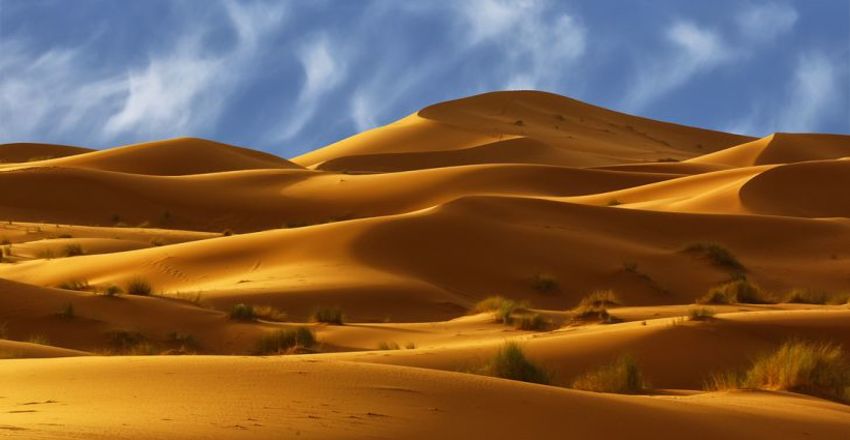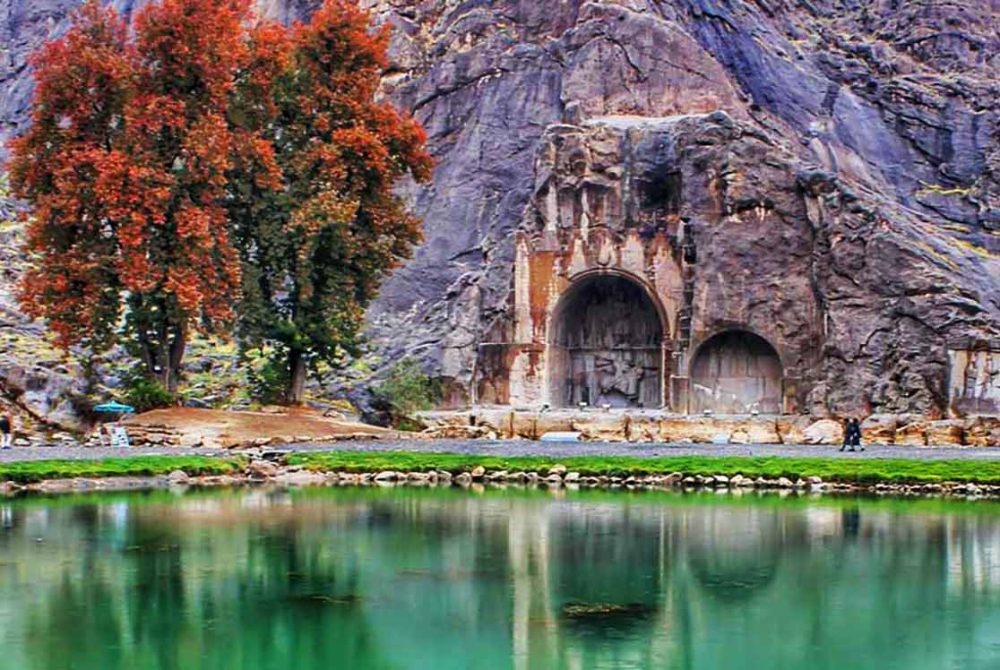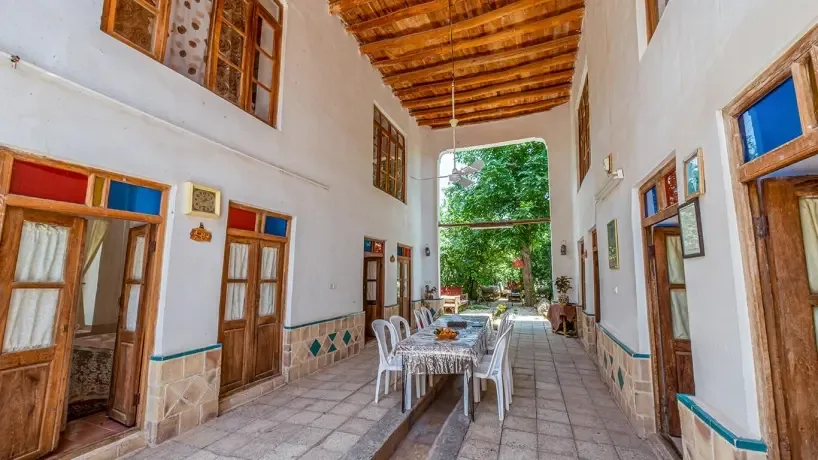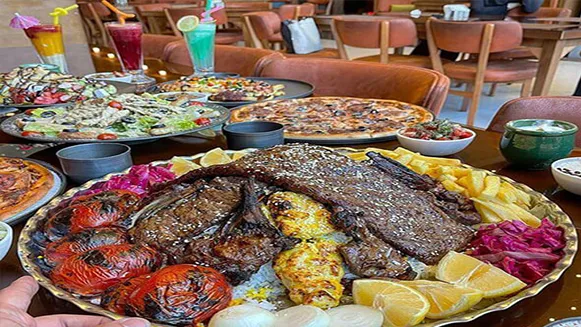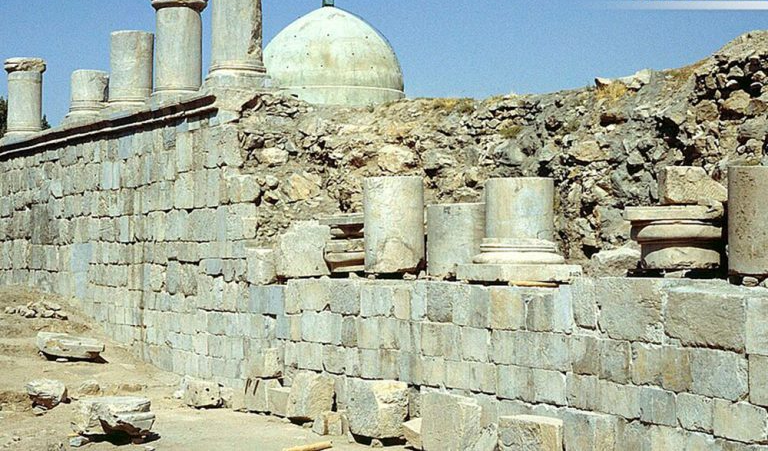11 Practical Tips for Desert Travel
Desert climbing in nature is one of the sweet experiences for every person. Desert means a new life of different wildlife and dry and burning climate. The effort of desert animals and plants to survive in the hot nature has always been interesting and sometimes strange for the nature walker. All deserts are not as dry and hot as you think, but you should have the mentality that desert means lack of access to water and Cool and sometimes even cold nights.
If you have booked a desert tour or are planning to travel to the desert on your own, come with the Gulf City Pedia to learn 11 basic tips to adapt to the desert nature and create a more memorable memory of your trip.
1. Avoid walking in the desert during the hot hours of the day
The fact is that you have to think like the animals that live in the desert. Desert animals never choose midday to move from one place to another. Early morning when the air is still cool and evening when the sun is not in the sky are the best times to walk in the desert. Avoid walking in the desert between 10 am and 4 pm.
If you have a nature-loving companion, headlamp, map, food and a route finder, it is the best suggestion for walking in the desert at night. Of course, as long as you watch out for wild animals that choose the night to find food and travel the path.
2. Drink a lot of water:
All desert tourists know that they should drink a lot of water. It is necessary to give your body a lot of fluids before starting to walk in the desert. If you travel to the desert in the summer, you need to drink about 1 liter of water every hour, and if you choose cooler autumn days to patrol the desert, a gallon of 3 to 5 liters of water is suitable for one person in one day. If you plan to make your desert climbing adventure more exciting and you want to go further away from desert camps and go in search of unknown nature and water yourself, be sure to bring a water filter with you.
Many people wait until their bodies are dehydrated or even dehydrated and then drink water. You should not expect to feel thirsty in the desert. Drink water before you feel thirsty. If you want your body system to work properly and not lose too much water, do not use sweet and alcoholic drinks before traveling to the desert so that your body’s mechanisms do not go out of order.
The Best Deserts in Iran for Travel in the First Half of Autumn
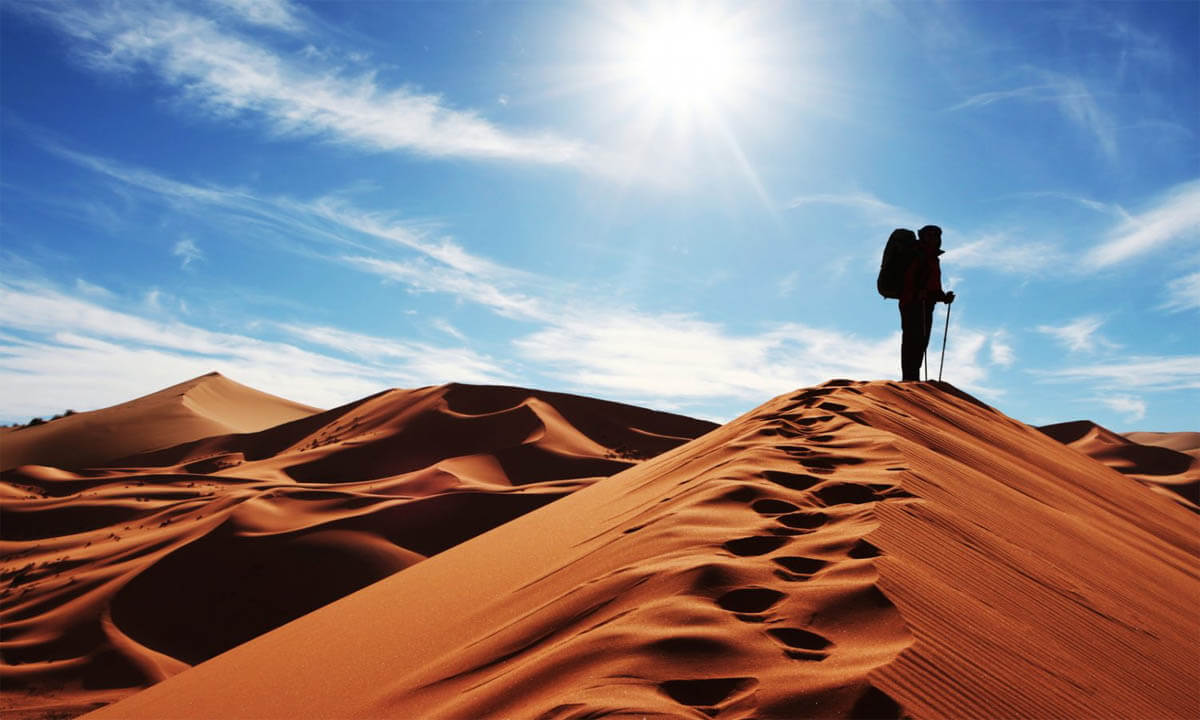
3. Charge your body’s electrolytes
Yes, you heard right. In the body of living organisms, substances such as sodium, potassium, chloride and bicarbonate are called electrolytes. When your body sweats, a significant amount of sodium and other minerals are excreted from your body. It is quite clear that your body needs all those minerals to function properly, and increasing or decreasing the amount of these elements will make your body abnormal. If your body is losing a lot of sodium due to sweating and enduring the heat of the desert, or even if you drink a lot of water but you don’t have a suitable alternative to supply your body with electrolytes, your body is in a state called hyponatremia, which means a drop in the amount of sodium in the blood. is going
Use the drinks that are produced for athletes these days in your climbing desert. You can also buy a packet of electrolyte powder from the local pharmacy before traveling and add some of that powder to your drinking water while walking in the desert.
4. Know the symptoms related to diseases caused by heatstroke:
Before going to the desert, it is necessary to familiarize yourself with the symptoms of heat stroke and other diseases related to dry and hot environments. Willingly or unwillingly, your body is exposed to such diseases and reactions in the desert due to the new weather conditions it encounters. In addition to dehydration and hyponatremia that were mentioned earlier, there are 2 other diseases that you should know the symptoms and causes of their occurrence:
Heat stroke: All of us have experienced heat stroke on hot summer days. Especially when we had to walk a distance under direct sunlight in the middle of the afternoon or when we were melting from the heat while standing behind the bus windows.
So identifying the symptoms related to heat stroke will not be difficult for anyone. When your body is in a situation where it has to endure very high temperature and on the other hand, its body is not well supplied with enough water and electrolytes, heat stroke occurs. If you do not take care of your heat stroke, your body will enter a phase called heat stroke.
As you can see, taking care of body temperature and providing enough water is very important in a desert trip.
5. Be careful of storms and floods:
Is it a flood in the desert? Yes, it is true that the desert has a hot and dry nature, but the desert rains are very short and intense. It doesn’t matter which desert you go to sooner or later you will see winds and sandstorms. As a professional tourist, before traveling to the desert, you should get complete information about the weather conditions of that area. If there is a storm, take shelter next to a bush and do not go to places with a lower height.
Be prepared for the fact that you may have to abandon your excursion and go to a safe place. Hot winds and sandstorms leave beautiful designs on the sands, but they do not leave the same beautiful effect on humans. And a moment of neglecting to seek shelter can leave a heavy cost for humans.
6. Wear appropriate clothes and pack your bag smartly
For desert climbing, you should wear light, loose and light-colored clothes. Dress with long sleeves and Long pants and long socks are recommended to avoid sunburn. Protect your skin from the sun as much as you can. Getting sunburned by the scorching desert sun is not beautiful at all. Even if we ignore direct sunlight, long clothes can be a good protection against the bites of creeping desert plants.
Be aware that the desert weather changes very quickly, so be prepared for weather changes and take warm clothes with you.
7. Always look for signs of wild nature in the desert and keep your distance from animals.
Pay attention to what is happening around you. Just watching your surroundings is not enough. Your ears must be sharp in the desert. The sound of bees and snakes can be easily recognized in the silence of the desert. The reality of desert nature is that animals fight each other for survival in that hot heat. If you suddenly get out of the middle of their war, you can be a good prey for them to win this war for food and survival. Try not to go too far from the surrounding desert camps, and if you are very adventurous, try to always keep a good distance from the desert animals.

8. Know your limits:
When you go desert climbing, be kind to your body and don’t put too much pressure on yourself. Professional nature walkers are fully aware of their physical limitations. Get plenty of rest on your hikes and use the desert shade as much as possible. Observing this point can bring you a good memory of desert travel.
9. Go desert climbing with your friend:
In general, all events in life will be sweeter with a companion, and this sweetness reaches its peak in the desert. Because only a second person can recognize the symptoms related to diseases caused by heat on the other side. If you have gone to the desert with children, check on them from time to time and check their physical symptoms.
10. Inform one of your relatives about the name of the desert you are going to
Make sure someone close to you knows the exact destination of your trip. If you get lost or injured in the desert and no one is with you, you will at least have the peace of mind that someone outside the desert knows where you are and will send someone to help.
11. Fill your car with essentials
Keep all the food that you think is useful, a first aid kit and plenty of water bottles in the car. Bring the necessary accessories for your car.
The list of essential supplies that you should take with you on a trip to the desert
Sunscreen: Use sunscreen with SPF above 30 and be careful to extend the sunscreen on your skin.
Lip Balm: Don’t forget lip skin protection creams.
Brimmed hat: The more you protect yourself from the sun, the better. A brimmed hat can be a second layer of protection for your skin after the layer of sunscreen.
Water: The more water you carry, the easier it will be to have a hassle-free desert experience.
Water filter: You may come across a source of water in your desert climbing and you want to drink from this water. As a desert traveler, it is better to bring a water filter so that you don’t miss the experience of drinking Guevara water from the heart of the desert.
Layers of suitable clothes: Choose clothes that are thin and allow air to pass through them. Light-colored clothes also reflect sunlight and prevent your clothes from absorbing too much heat.
T-shirt: loose, long sleeve and light. These are the three characteristics of a t-shirt suitable for desert travel.
Pants: Do not wear shorts. If you plan to wear shorts, wear long socks so that your legs don’t burn under the hot desert sun.
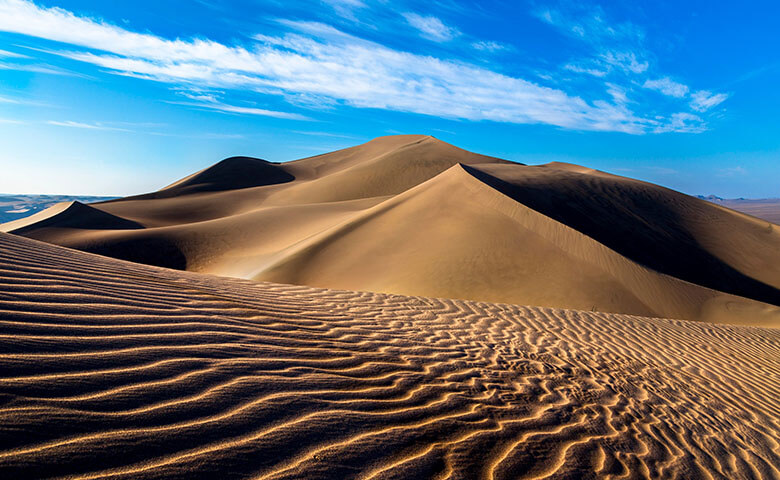
Jacket: The desert is hot, but don’t forget a jacket. The desert is known for its fast changing weather and you never know what the weather will look like in a few minutes.
Pancho: Get rid of the thought that it doesn’t rain in the desert. A light poncho will be useful to stay safe in storms or momentary rains.
Socks: Cotton socks are the worst socks to wear in the desert. Cotton socks retain moisture and because the desert air is hot and you will sweat too much, it is better not to wet your feet.
Headscarf: The desert can suddenly be full of dust and sand. A scarf can protect your nose or neck from sand. If you get too hot, you can wet your handkerchief and wrap it around your neck. This will give you a cool feeling.
Shoes: Desert shoes should be light and have holes for your feet to breathe. GORE-TEX shoes are the best option to choose due to the type of construction technology used in them. These shoes are designed for mild and warm weather, and there is a compartment around them for moving air from the inside of the shoe to the outside. In addition to these tips, these shoes will keep your feet dry in case of rain.
Headlamp: The relentless sunlight during the day will give you the false impression that everything is always visible in the desert. If you plan to go to the desert at night, you will definitely need a headlamp.
Traveling to the desert without desert tours can be very exciting as long as you follow all the safety tips. If you have a sweet experience of a solo trip to the desert, share it with us:

